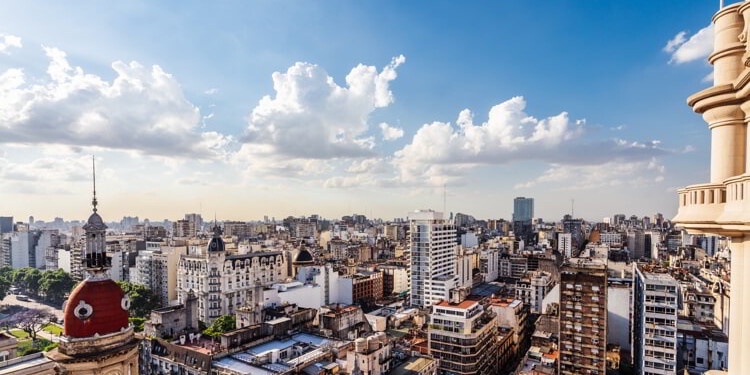As I sit down to write this article, it’s a dark, chilly evening in Asheville.
By the time you’re reading it, I’ll be in bright, sunny Buenos Aires.
I’ll have gotten all the way there for just US$5.60.
Traveling isn’t just a hobby for me. For the past 15 years, I’ve been constantly traveling as an English teacher, digital nomad, and live music fanatic.
Whether backpacking in Southeast Asia, bouncing around nomad hubs in Latin America, or following my favorite bands around the United States, travel is my lifestyle.
The biggest problem with my lifestyle is cost…
I don’t have a trust fund, I haven’t won the lottery, and I didn’t marry into riches. I’m just a freelancing teacher and writer who lives frugally and prioritizes travel over possessions.
So how on Earth am I doing all of this globetrotting?
Start Your New Life Today, Overseas
Two Simple Words: Travel Hacking
Travel hacking refers to using credit cards and loyalty programs to amass points. These points can then be redeemed for things like free flights, hotel stays, and more.
There are all kinds of credit cards that are tied to airlines and hotel companies, including the Big 3 airlines (United, American, Delta) and brands like Marriott and Hilton. They partner with banks like Chase, American Express, Citi, and Capital One.
Both the banks and the airlines and hotel chains are competing for your business. They want you to be a loyal customer, preferably for many years. One way to entice you to sign up for a credit card and/or a loyalty program is to offer a substantial sign-up bonus.
You’ve probably seen these cards offered in in-flight magazines or by eager airline employees. While they come across as a bit scammy, they’re very real and are a great asset to have if used correctly.
Generally speaking, these sign-up bonuses go something like this: “Spend US$3,000 in the first three months of opening your account and earn 50,000 points.”
There’s a lot more to it than that, including many other perks to sweeten the deal, but that’s the gist of it.
Once those points are in your account, you’re able to cash them in by booking flights, hotel stays, rental cars, cruises, or whatever else you want to do with
your travel funds.
You can do this through a bank’s travel portal, like with Chase or Capital One, or directly with the airline if you get a co-branded credit card with one of them.
Beyond the points, many travel hacking credit cards come with other perks.
These range from free rental car insurance to discounts on TSA Pre-Check or Global Entry to my personal favorite—airport lounge access.
Traveling for free and making use of those perks along the way is a great feeling. The banks are happy to keep offering you new credit cards…
That’s how you get started with travel hacking, my friends…
Sincerely,
Sasha Savinov
Contributor, Overseas Living Letter










